Continued from the last post, and after a week of using the Huawei Watch GT 3!
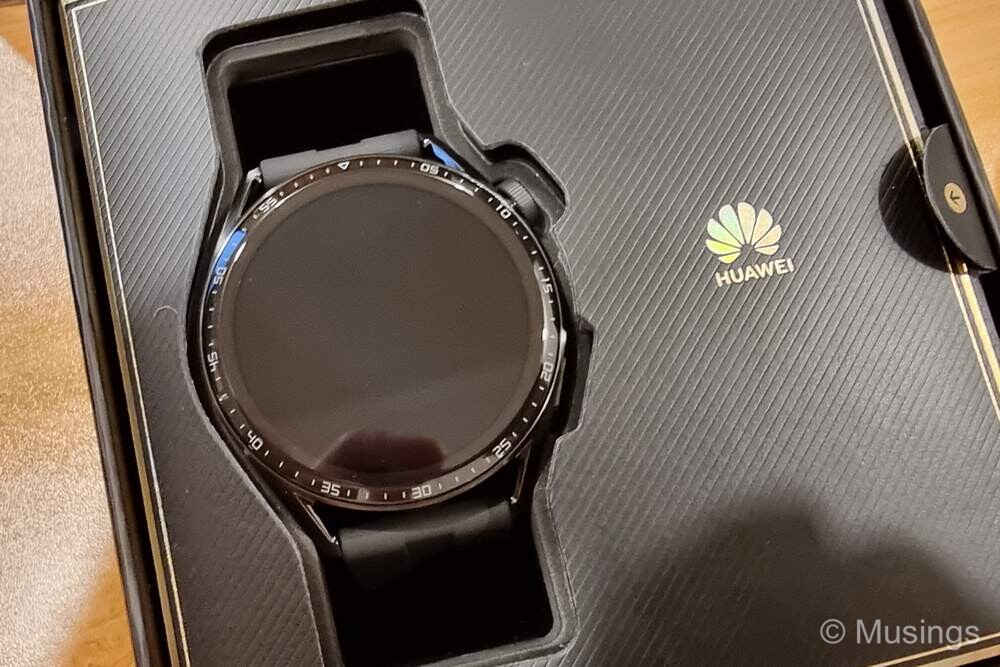
According to the spec sheet, the GT 3 at 42.6g is very slightly lighter than the original GT’s 46g. The lighter weight isn’t actually noticeable though, since that tiny bit of difference will likely be more countered by the weight and comfort-level of the strap you’ve using with the watch.
What is an obvious difference is the AMOLED display itself: it’s larger, at 1.43″ vs 1.39″ on the older GT. That said, the bezel markings are back again. I’ve never quite understood the need for the minute markings on bezels: as in, do the intended target market owners of these smartwatches face difficulties telling time using watch hands and thus need these markings?
Thankfully, the new GT’s bezel is also better integrated with the display portion of the watch face. Check out this picture below: the bezel on the GT 3 is a lot thinner! The bezel this time also sit flushed with the display screen: both a good and bad thing. It makes it less obstructive. But for klutzy users who’re in the habit of smashing their watch screens against hard surfaces, that the bezel on the original GT is slightly raised did offer it that additional bit of protection.
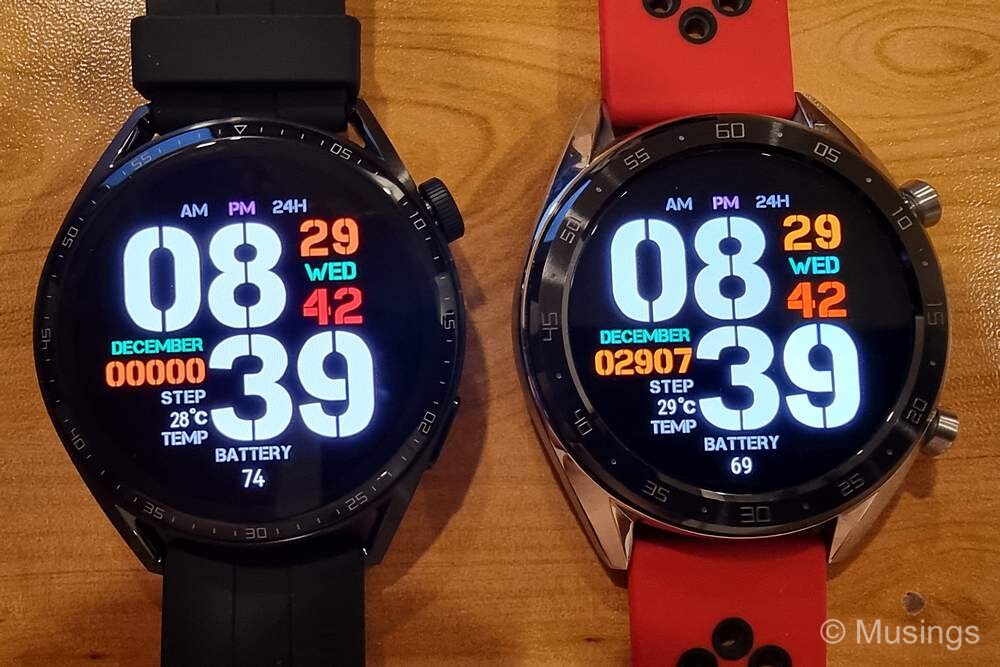
The new GT 3 also benefits from better hardware and an improved health sensor array. I don’t think the GT 3’s upgraded sensors is quite where the Samsung Galaxy Watch 4 Classic is at, but you get a lot more data on the new GT 3 compared to the original – e.g. skin temperature. If I can only figure out what I should be watching about that haha! Navigating through options and screens in the new watch also feels a lot smoother than the original GT. The animation fluidity still isn’t quite what you get on the better smartphones these days, what with their 90Hz and higher display refresh rates. But coming from the original GT and the Amazfit GTS, the smoother performance is obvious and made it a real treat to use the new watch.
Battery life remains fantastic. The original GT saw daily drops of about 8% battery life. For the new GT, it’s very slightly higher at around 9% with all health sensors turned on to default settings, the usual notifications from email and messaging sounding off frequently in the day, and no use of the GPS or Always On Display. Based on my usage pattern, I reckon I’d definitely get more than a week of use at each charge, and two weeks if I turn off health sensors. Whichever the case is, the Huawei GT watches are the kind of wearables that you can use and that won’t make you worried about it running out of battery before the end of the day – not by a long shot. That, in essence, is also exactly the reason why I’m not tempted to switch to Wear OS or Apple watches: the thought of having to take off the watch to charge it every night just for it to be ready for use the following day is a non-starter for me.
I liked the new features on the new GT 3 too – for the most part. The watch’s ability to make and answer phone calls when tethered to the phone is novel (you can add your most frequent contacts as a screen on the watch). The microphone pick-up results in audio that is reasonably clear for the person on the other line, and the speaker is likewise capable of producing audio that you can hear… as long as you’re not in a noisy environment. The watch’s built-in memory also permits you to store music, which is no really useful for me as the built-in music player’s file organization system is really basic. However, I can control music playback on the phone – that’s super useful.
Installing new watch faces on the original GT was a major PITA: downloads took forever, installing them onto the watch even longer, and I could only keep around half a dozen additional downloaded watch faces on it the watch at any one time. The new GT 3 downloads and installs watch faces quickly, and after installing two dozen downloaded faces, I still haven’t hit a limit yet.
And speaking of watch faces, there are a lot of them in Huawei’s watch ecosystem. Sure, not all of the watch faces in the store are free – many of the premium ones require you to fork out money – but there is a huge number that don’t cost money. Easily more than enough for those of us who want the watch to look different everyday. I haven’t done a count, but I’d put the number of free watch faces to a few hundred, at least. What’s missing though is an app to automatically change your watch faces every day. That would certainly be a really nifty feature to have!
And the last super useful feature on the new GT 3 for me: true wireless charging! The supplied in the box charger stays inside there now: I can simply leave this watch on any one of the wireless charging pads I’ve got scattered around the house, and it’ll charge.
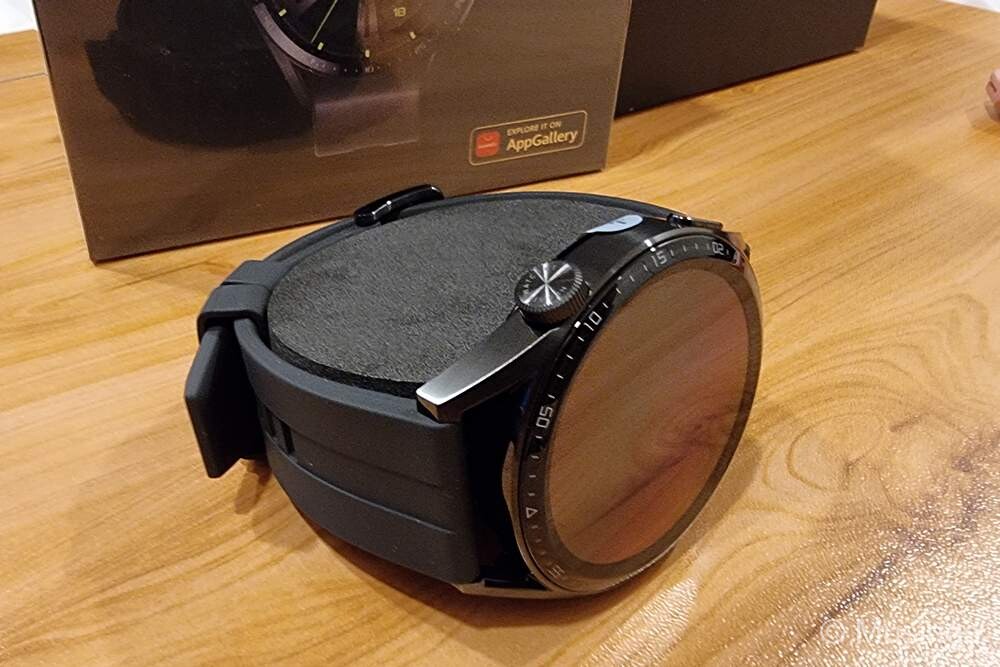
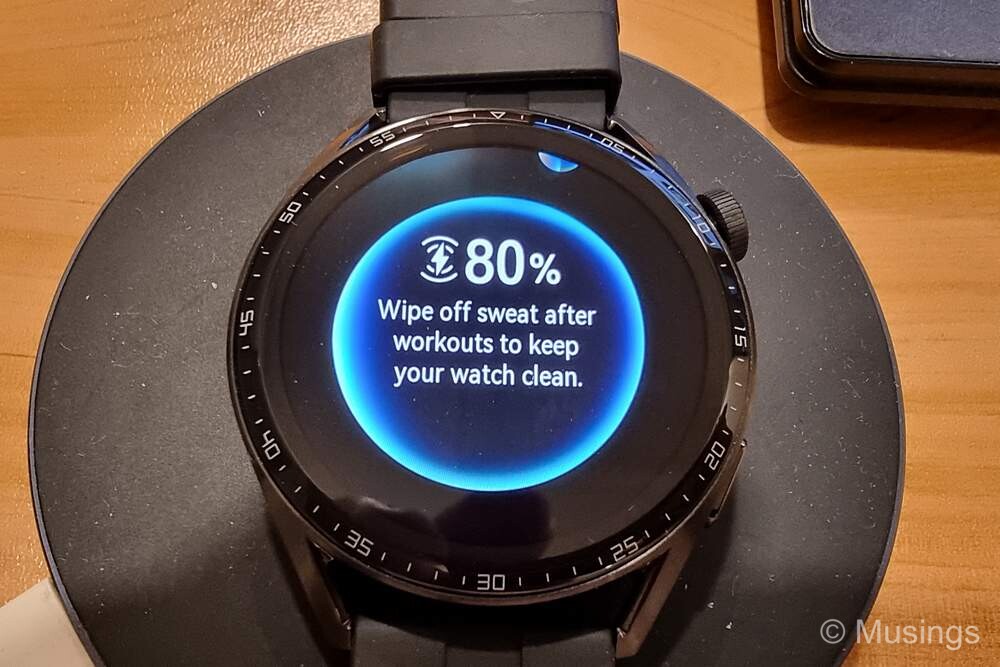
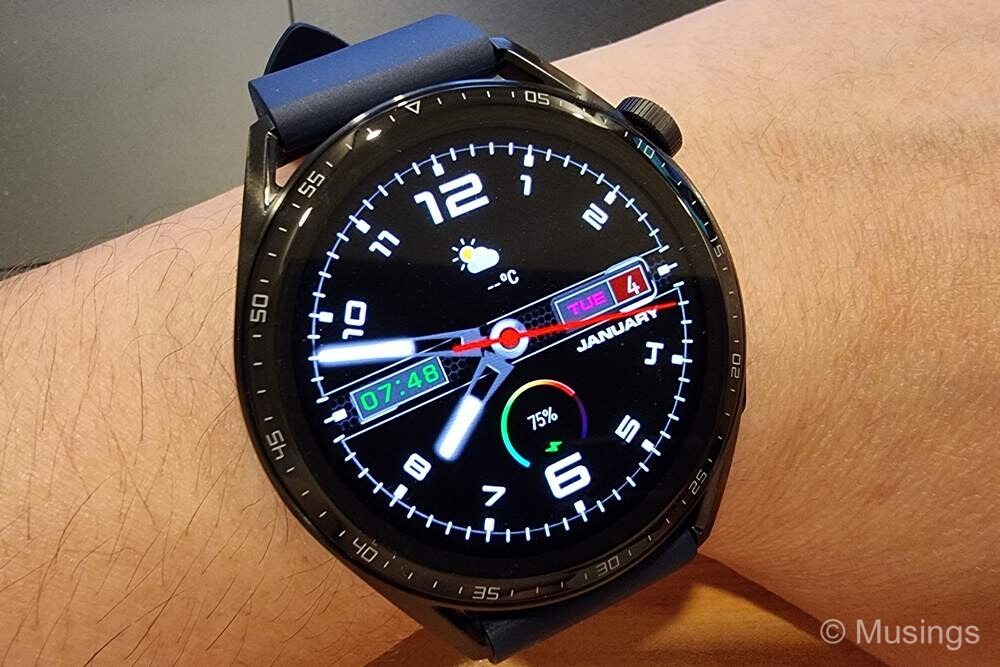
Finally, in a nutshell and generally speaking, using the new GT 3 is like being re-acquainted to something you’re already very familiar with, albeit it having that little bit more spit and shine. So, if you’re not already a fan of the GT series, then this watch isn’t going to change your mind: it’s finally not as full-featured as an Apple or a Google Wear OS watch – it’s in fact, finally, a smartwatch-lite. But if all you need is activity, health and sleep tracking, and notifications, and don’t need other highfalutin features like replying to messages, making calls from the watch while not tethered to your phone, and fantastic battery life is important to you, then the Watch GT series are well worth a look.